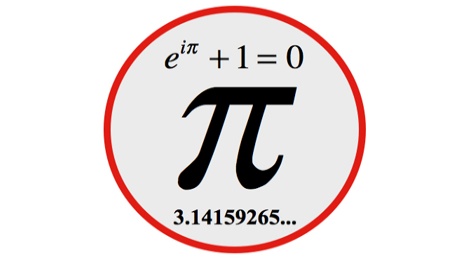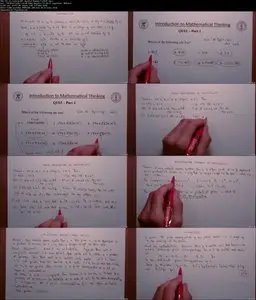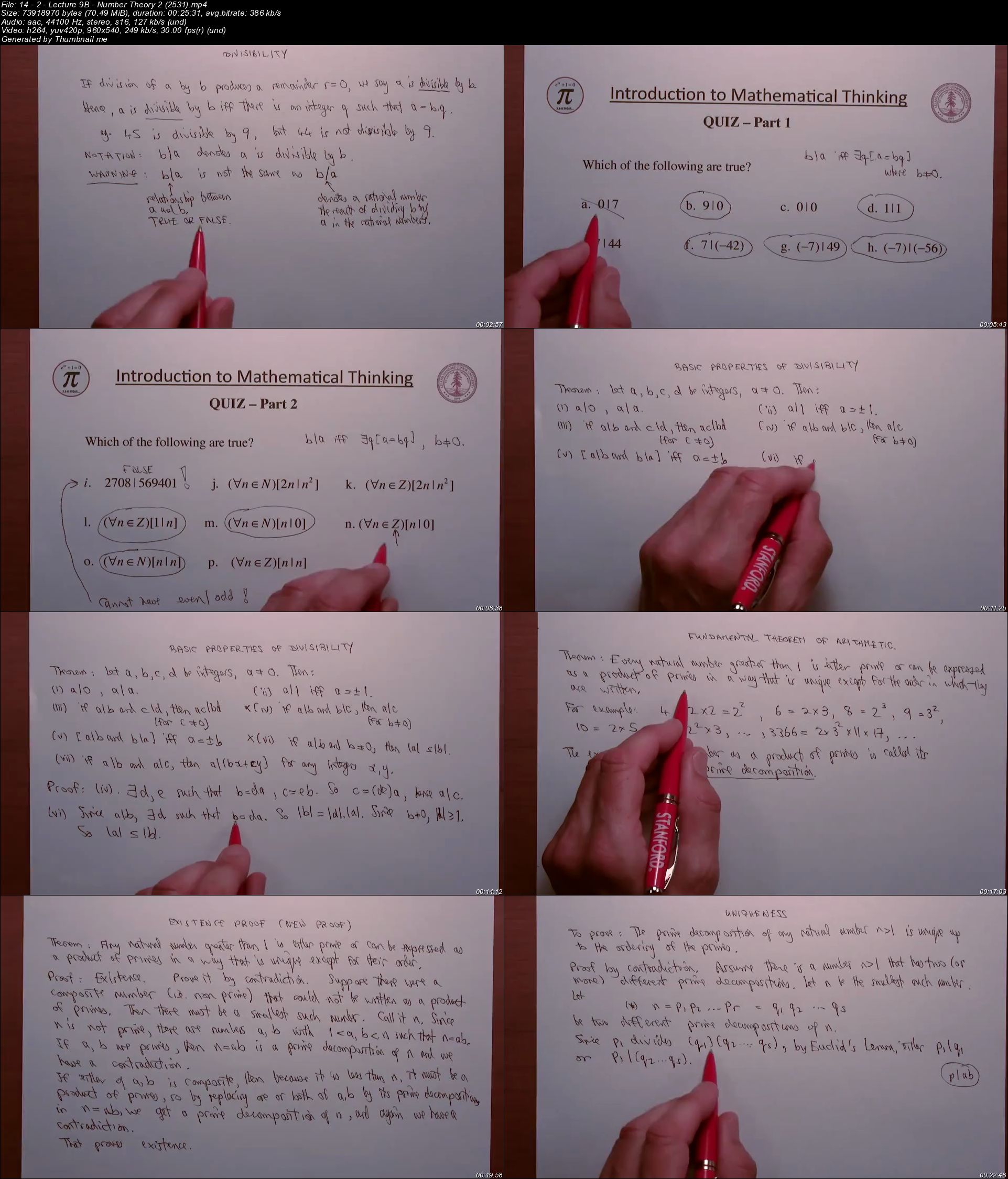Coursera - Introduction to Mathematical Thinking
WEB-Rip | MP4 | AVC1 @ 500 Kbit/s | 960x540 | AAC Stereo @ 128 Kbit/s 48 KHz | 2.47 GB
Genre: Mathematical Thinking, Math | Language: English | PDFs Included
WEB-Rip | MP4 | AVC1 @ 500 Kbit/s | 960x540 | AAC Stereo @ 128 Kbit/s 48 KHz | 2.47 GB
Genre: Mathematical Thinking, Math | Language: English | PDFs Included
Introduction to Mathematical Thinking
Learn how to think the way mathematicians do - a powerful cognitive process developed over thousands of years.
About the Course
NOTE: For the Winter 2014 session, the course website will go live at 10:00 AM US-PST on Saturday February 1, two days before the course begins, so you have time to familiarize yourself with the website structure, watch some short introductory videos, and look at some preliminary material.
The goal of the course is to help you develop a valuable mental ability – a powerful way of thinking that our ancestors have developed over three thousand years.
Mathematical thinking is not the same as doing mathematics – at least not as mathematics is typically presented in our school system. School math typically focuses on learning procedures to solve highly stereotyped problems. Professional mathematicians think a certain way to solve real problems, problems that can arise from the everyday world, or from science, or from within mathematics itself. The key to success in school math is to learn to think inside-the-box. In contrast, a key feature of mathematical thinking is thinking outside-the-box – a valuable ability in today’s world. This course helps to develop that crucial way of thinking.
The course is offered in two versions. The eight-week-long Basic Course is designed for people who want to develop or improve mathematics-based, analytic thinking for professional or general life purposes. The ten-week-long Extended Course is aimed primarily at first-year students at college or university who are thinking of majoring in mathematics or a mathematically-dependent subject, or high school seniors who have such a college career in mind. The final two weeks are more intensive and require more mathematical background than the Basic Course. There is no need to make a formal election between the two. Simply skip or drop out of the final two weeks if you decide you want to complete only the Basic Course.
Subtitles for all video lectures available in: Portuguese (provided by The Lemann Foundation), English
Course Syllabus
Instructor’s welcome and introduction
1. Introductory material
2. Analysis of language – the logical combinators
3. Analysis of language – implication
4. Analysis of language – equivalence
5. Analysis of language – quantifiers
6. Working with quantifiers
7. Proofs
8. Proofs involving quantifiers
9. Elements of number theory
10. Beginning real analysis
Recommended Background
High school mathematics. Specific requirements are familiarity with elementary symbolic algebra, the concept of a number system (in particular, the characteristics of, and distinctions between, the natural numbers, the integers, the rational numbers, and the real numbers), and some elementary set theory (including inequalities and intervals of the real line). Students whose familiarity with these topics is somewhat rusty typically find that with a little extra effort they can pick up what is required along the way. The only heavy use of these topics is in the (optional) final two weeks of the Extended Course.
A good way to assess if your basic school background is adequate (even if currently rusty) is to glance at the topics in the book Adding It Up: Helping Children Learn Mathematics (free download), published by the US National Academies Press in 2001. Though aimed at K-8 mathematics teachers and teacher educators, it provides an excellent coverage of what constitutes a good basic mathematics education for life in the Twenty-First Century (which was the National Academies' aim in producing it).
Suggested Readings
There is one reading assignment at the start, providing some motivational background.
There is a supplemental reading unit describing elementary set theory for students who are not familiar with the material.
There is a course textbook, Introduction to Mathematical Thinking, by Keith Devlin, available at low cost (US base price $10.99) from Amazon, in hard copy and Kindle versions, but it is not required in order to complete the course.
For general background on mathematics and its role in the modern world, take a look at the five week survey course on mathematics ("Mathematics: Making the Invisible Visible") Devlin gave at Stanford in fall 2012, available for free download from iTunes University (Stanford), and on YouTube (1, 2, 3, 4, 5), particularly the first halves of lectures 1 and 4.
Course Format
The Basic Course lasts for eight weeks, comprising ten lectures, each with a problem-based work assignment (ungraded, designed for group work), a weekly Problem Set (machine graded), and weekly tutorials in which the instructor will go over some of the assignment and Problem Set questions from the previous week.
The Extended Course consists of the Basic Course followed by a more intense two weeks exercise called Test Flight. Whereas the focus in the Basic Course is the development of mathematically-based thinking skills for everyday life, the focus in Test Flight is on applying those skills to mathematics itself.







